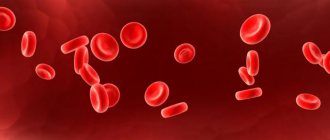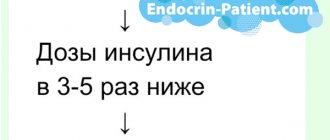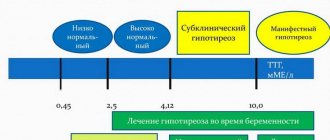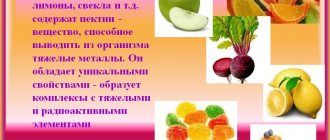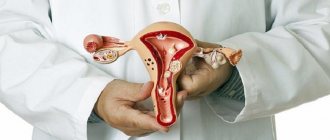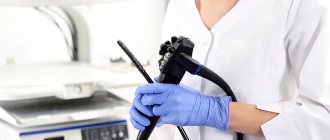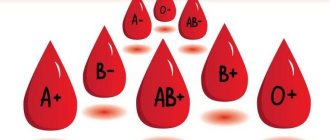general characteristics
Copper is a catalytic component of a number of enzymes and a structural component of many important proteins. The key organ for copper metabolism is the liver, where it is incorporated into copper-containing enzymes and other proteins; the concentration of free copper in the cytoplasm is extremely low. More than 90% of copper is transported from the liver to peripheral tissues in combination with ceruloplasmin. Most copper-containing proteins are oxidases, localized on the surface of cell membranes or in vesicles. A copper-containing metalloenzyme, superoxide dismutase, protects plasma and cytoplasmic components from free radicals. The enzyme cytochrome c oxidase is important in intracellular energy processes. Lysyl oxidase is necessary for stabilizing the extracellular matrix, at the same time for the formation of cross-links of collagen and elastin. Copper-containing enzymes, including ceruloplasmin, are involved in iron metabolism. Copper-containing enzymes include an enzyme that catalyzes the conversion of dopamine into norepinephrine and an enzyme that catalyzes the synthesis of melatonin. Copper-containing proteins are involved in gene transcription processes. Congenital defects in copper metabolism cause severe disorders: Menkes syndrome (a genetically determined malabsorption of copper in the intestine), Wilson-Konovalov disease (impaired transport of copper, its inclusion in ceruloplasmin, accompanied by the accumulation of copper in organs and tissues). Symptoms of copper deficiency include neutropenia, anemia (not sensitive to iron supplements), osteoporosis, various bone and joint lesions, decreased skin pigmentation, neurological symptoms, and cardiac dysfunction. Copper absorption deficiency can be observed in diffuse diseases of the small intestine, in infants (especially premature infants) on a copper-deficient milk diet, in patients with long-term parenteral nutrition with a deficiency of microelements or receiving zinc preparations such as penicillamine. Symptoms of copper salt poisoning (action of fungicides, absorption of copper-containing solutions) are characterized by nausea, vomiting, headaches, diarrhea, and abdominal pain. Copper poisoning may cause liver damage, jaundice, and hemolytic shock. To assess copper status, it is advisable to study the copper content in plasma in combination with the determination of ceruloplasmin and determination of copper excretion in urine.
Foods Rich in Copper
Macro- and microelements in full are contained in seafood. Seafood also contains large amounts of copper.
Squid, fish, shrimp, mussels and edible algae, when regularly present in the diet, can provide the body with a sufficient supply of this element.
Copper is also present in plants and “regular” animal foods. It accumulates in plant products mainly because copper microfertilizers are used to improve the yield of many crops.
Therefore, the mineral is present in vegetables, fruits, and cereals. They contain copper along with molybdenum, and this increases their value as sources of microelements, because these two minerals “work in pairs” in the body.
Some plants “purposefully” accumulate copper. Thus, ginseng, known for its numerous beneficial effects, is distinguished by its high content.
Raw egg yolks also contain high dosages of copper, but due to their specific taste and the risk of salmonella infection, raw eggs should not be eaten.
Liver, fermented milk products, and meat are rich in copper from animal sources.
Patient preparation rules
BloodStandard conditions: In the morning before 11.00, on an empty stomach, after 8-12 hours of fasting. Possible: During the working day, ML “DILA”. A break of at least 6 hours after eating (fatty foods should be excluded). HairStandard conditions: BM is taken during the working day of ML "DILA". Cut from the back of the head at a distance of 0.1 mm from the roots. BM is delivered in a sterile plastic container with a screw cap. Important: Hair must be clean and thoroughly dried. It is not allowed to apply care and styling products to hair before analysis. Perm without coloring and hair bleaching do not interfere with the analysis. It is recommended to analyze dyed hair 2 months after the dyeing procedure. It is recommended to stop using medicated shampoos, anti-dandruff products, mousses, medicated balms and gels 2 weeks before submitting your hair for analysis. Attention: The BM is collected by the attending physician. NailsStandard conditions: BM is accepted during the working day of ML "DILA". Trim the nails of both hands. BM is delivered in a sterile plastic container with a screw cap. Important: Nails must be clean and dry. It is not allowed to apply nail polish or other care products 1 week before the test. Also, you should not treat your nails with a metal file before the procedure. To the doctor: The BM is taken by the attending physician. Daily urine Standard conditions: BM is taken during the working day of ML “DILA”. The morning portion of urine is placed in the toilet. Collect urine per day in a container, including the morning portion of the next day. After the last urine collection, mix all collected urine, determine its volume and record it. Pour 50 ml and deliver to the nearest ML “DILA” within 2 hours. Keep the container with BM in a cool place, protected from light, during collection. Possible: To collect daily urine, the patient is offered to purchase a container with a volume of 2.0 liters at the price price (the cost of the container is not included in the cost of the test).
You can add this study to your cart on this page
Classification of minerals
Minerals
– natural substances that make up rocks, ores, meteorites (from the Latin minera - ore). In bones, minerals are presented in the form of crystals, in soft tissues - in the form of a true or colloidal solution in combination, mainly with proteins.
- The first option is to divide 12 structural elements into groups: carbon, oxygen, hydrogen, nitrogen, calcium, magnesium, sodium, potassium, sulfur, phosphorus, fluorine and chlorine.
- 15 essential (vital): iron, iodine, copper, zinc, cobalt, chromium, molybdenum, nickel, vanadium, selenium, manganese, arsenic, fluorine, silicon, lithium.
- 2 conditionally essential elements: boron and bromine.
- “Candidates for necessity”: cadmium, lead, aluminum, rubidium.
- The remaining 48 elements are less significant for the body.
The second classification option, more suitable for a nutritionist:
- Macroelements. Contained in the body in large quantities. Sodium, potassium, calcium, phosphorus, iron, magnesium, chlorine, sulfur.
- Microelements. Their concentration in the body is low. These are zinc, iodine, fluorine, silicon, chromium, copper, manganese, cobalt, molybdenum, nickel, boron, bromine, arsenic, lead, tin, lithium, cadmium, vanadium, etc.
Interpretation:
- Age-related changes; infections and inflammation; pregnancy; leukemia; biliary cirrhosis; Hodgkin's disease; pellagra; pulmonary tuberculosis; most anemias; thalassemia; rheumatic fever; myocardial infarction; stroke; ankylosing spondylitis; hypo- and hyperthyroidism; collagen diseases; systemic lupus erythematosus; complications of renal dialysis and transfusions in newborns; injuries and malignant neoplasms of the gastrointestinal tract, lungs, bones, chest, blood system; estrogen therapy.
- Wilson-Konovalov disease (400-600 mcg/l (with acute liver damage, the copper content in the plasma increases, without a corresponding increase in the level of ceruloplasmin); diseases of the gastrointestinal tract; cystic fibrosis; nephrotic syndrome; Menkes syndrome; remission of leukemia (ACTH therapy or prednisone); some iron deficiency anemia; burns; dysproteinemia, fasting; chronic ischemic heart disease.
Sample result (PDF)
The role of microelements in the human body
Microelements
- mineral substances, the content of which in the body is measured in milligrams and micrograms. Microelements include: zinc, iodine, selenium, fluorine, silicon, chromium, copper, manganese, cobalt, molybdenum, nickel, boron, bromine, arsenic, lead, tin, lithium, cadmium, vanadium, etc.
The biological functions of many microelements, as well as their optimal values, are well studied. For example, iodine, copper, zinc, selenium, manganese. The subtleties of the functions of some other microelements have been studied to a lesser extent. Their possible toxic effects (at elevated concentrations) have been more studied. For example, aluminum, nickel, lead.
Among the many microelements in the body, only nine are essential, i.e. their imbalance leads to clinical symptoms. All the rest are non-essential - they are characterized by certain biological functions, but deficiency syndromes are unknown. Some of them are components of cells and tissues as a result of adaptation to the environment.
Essential
: zinc, iodine, chromium, cobalt (as a component of vitamin B 12), manganese, molybdenum, magnesium, copper, selenium and iron.
Non-essential
: boron, phosphorus, nickel, silicon and vanadium.
From the point of view of biological function, elements can be divided into 2 groups:
- Enzyme cofactors
(with activating, regulatory and structural-stabilizing functions); The essential elements of this group are zinc, magnesium, manganese, molybdenum, copper and iron.
- Components of molecules
(can be found in the bones of the skeleton, metabolic system, etc.); The essential elements of this group are iodine, chromium, cobalt and selenium.
The content of MCE in the body varies depending on the season and age. In particular, with age, the concentration of aluminum, titanium, cadmium, nickel, zinc, and lead in tissues increases, and the concentration of copper, manganese, molybdenum, and chromium decreases. The content of cobalt, nickel, and copper in the blood increases and the content of zinc decreases.
During pregnancy and lactation, the blood becomes 2-3 times more copper, manganese, titanium and aluminum. The smallest amount of microelements is in spring, the largest in autumn.

The functions of microelements are as follows:
- Ensuring normal acid-base balance.
- Participation in the processes of hematopoiesis, secretion and bone formation.
- Maintaining osmotic pressure at a constant level.
- Nerve conduction control.
- Establishment of intracellular respiration.
- Effect on the immune system.
- Ensuring full muscle contraction.
- They are part of hormones (iodine in thyroxine, zinc in insulin and sex hormones, etc.)222
We recommend
“The best courses in nutritionology abroad and in Russia” Read more
That is, despite their low concentration in the body, many microelements are the most important catalysts for various biochemical processes involved in all types of metabolism, and also play a significant role in the adaptation of the body under normal conditions and especially in pathology.
Foods containing essential micronutrients
Zinc
Concentrated in the thymus gland, in the insular apparatus of the pancreas, and bone tissue. Necessary for cellular (tissue local) immunity of the skin and mucous membranes. Accelerates wound healing, prevents inflammatory skin diseases (acne, eczema, neurodermatitis, psoriasis, etc.). Contained in the insulin molecule and in the enzyme alcohol dehydrogenase. It decreases with an excess of refined carbohydrates and excess alcohol in the diet.
Zn content in 100 g of products:
- Oysters (100-400 mg).
- Pumpkin seeds (10).
- Wheat and rye bran (13).
- Beef, roe deer, lamb, elk, venison, horse meat (2-5).
- Birch leaf, celandine grass.
- Pine nuts (6.5).
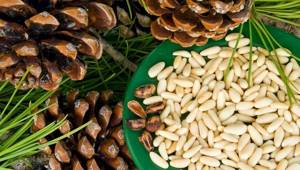
Selenium
A trace element that is necessary for the synthesis of Se-dependent hydrolin peroxidase. Participates in the neutralization of more than 300 toxic substances and heavy metals in the body. Necessary for the deiodization reaction of thyroid hormones.
Se content in 100 g of products:
- Garlic (200-400 mcg).
- Salo (200-400 mcg).
- Wheat germ (110 mcg).
- Pine nuts (50 mcg).
- Coconut (810 mcg).
- Brazil nut (1910 mcg).
- Oregano, celandine.
- Golden root, Leuzea, ginseng.
- Porcini mushrooms (40 mcg).
Manganese
Part of cartilage and connective tissue. Necessary for insulin synthesis. Mn content in 100 g of products:
- Rye bread (1.5 mg).
- Buckwheat (1.5 mg).
- Horseradish (1.3 mg).
- Green tea.
- Wheat bran.
- Blueberries, blueberries, raspberries, chokeberries.

Chromium
A microelement that regulates carbohydrate metabolism, the activity of the heart muscle and blood vessels.
Cr content in 100 g of products:
- Tuna (90 mcg).
- Salmon (55 mcg).
- Mackerel (53 mcg).
- Herring (51 mcg).
- Beetroot (50 mcg).
- Shrimp (20 mcg).
- Quail eggs (14 mcg).
- Lentils (10.8 mcg)
Copper
Copper, like iron, plays a critical role in maintaining optimal blood composition, namely in the formation of hemoglobin. Moreover, iron accumulating in the liver will not be able to take part in the formation of hemoglobin without copper.
Food sources of copper:
- nuts;
- legumes;
- animal liver;
- potato;
- sprouted wheat;
- seafood;
- fish;
- dried fruits (especially prunes);
- chocolate;
- garlic;
- eggs;
- dairy products.

In general, copper is found in almost all iron-containing foods.
Fluorine
Fluorine is the main component of mineral metabolism. This microelement is responsible for the condition of bone tissue, the full formation of skeletal bones, as well as the condition and appearance of hair, nails, and teeth. Food sources of fluoride:
- tea;
- fish;
- mineral water;
- walnuts;
- cereals;
- Cod liver;
- spinach;
- beet;
- seafood;
- meat;
- milk.
We recommend
"Can food heal people: the power of good nutrition" Read more
Iodine
The main function of iodine is to ensure the synthesis of the thyroid hormone called thyroxine. In addition, iodine is actively involved in the creation of phagocytes, which are a kind of “patrol” cells that destroy debris and all kinds of foreign bodies directly in the cells. Iodine-containing products:
- sea salt;
- green vegetables;
- table iodized salt;
- ocean and sea fish;
- seafood, including seaweed and seaweed;
- onion;
- garlic;
- eggs;
- Cod liver;
- beans;
- beet;
- oriental spices (especially ginger, pepper, coriander, as well as cumin, cloves and turmeric);
- carrot;
- cabbage of different varieties;
- potato;
- tomatoes.

Silicon
Despite the fact that silicon is present in the blood in fairly small quantities, when its reserves decrease, a person begins to react sharply to weather changes (this can include mood swings, severe headaches, and a deterioration in mental state). Food sources of silicon:
- rice;
- oats;
- barley;
- soy;
- legumes;
- buckwheat;
- pasta;
- corn;
- nuts;
- eggs;
- fish caviar;
- green vegetables;
- seafood;
- dairy products;
- seeds;
- mushrooms.
In addition, silicon is found in grape juice, wine and beer.
Micronutrient intake standards for humans
Scientists have long calculated how many microelements a person needs to consume. Their main sources can be either food or special vitamin-mineral complexes. In order for the body to function smoothly, it is important to replenish microelements on time. This ensures excellent health, good mood, high performance, and also allows you to delay old age and strengthen your immune system.
| Elements | Average daily requirement for adults* | Average daily requirement for pregnant and lactating women* | ||
| men | women | pregnant women | nursing | |
| Iodine | 200 mcg | 150 mcg | 230 mcg | 260 mcg |
| Fluorine | 3.8 mg | 3.1 mg | 3.1 mg | 3.1 mg |
| Zinc | 10.0 mg | 7.0 mg | 10.0 mg | 11.0 mg |
| Selenium | 30-70 mcg | 30-70 mcg | 30-70 mcg | 30-70 mcg |
| Copper | 1.0-1.5 mg | 1.0-1.5 mg | 1.0-1.5 mg | 1.0-1.5 mg |
| Manganese | 2.0-5.0 mg | 2.0-5.0 mg | 2.0-5.0 mg | 2.0-5.0 mg |
| Chromium | 30-100 mcg | 30-100 mcg | 30-100 mcg | 30-100 mcg |
* Average daily requirement for adults: men and women aged 25 to 51 years. The standards recommended by the German Society of Nutritionists (Deutsche Gesselschaft fur Ernahrung - DGE) are given. Data for pregnant and lactating women is also from this organization.
